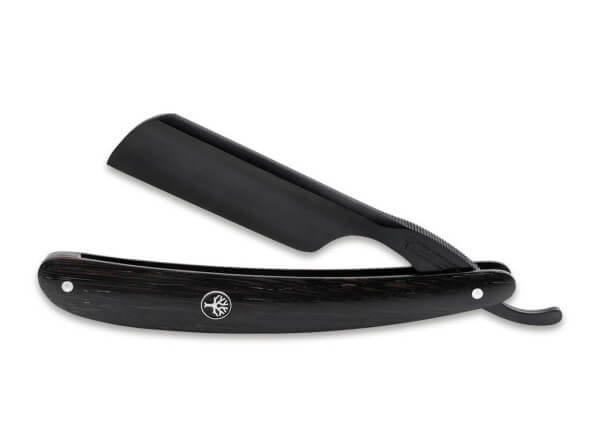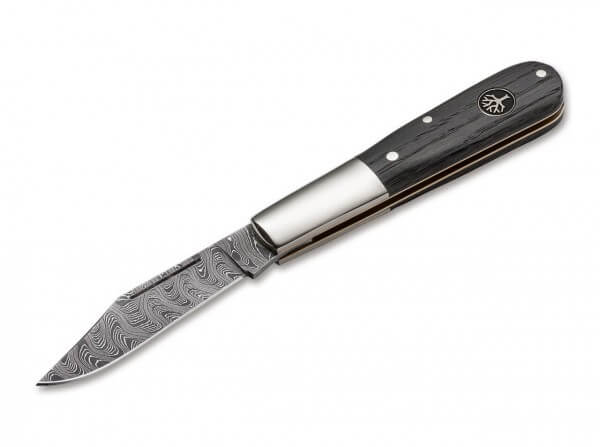Bog Oak Wood

The wood sold under the name of bog oak is used to make high-quality knife handles. Bog oak is not a separate oak species, but oak wood that has been submerged in a bog for a long time. Oak trunks are found in bogs, swamps, on riverbanks and lake shores, where they have been submerged for several centuries or even millennia.
Bog oak is often found in regions that used to have large bogs or swamps, such as central Europe, for example, where moors and swamps were still common in the Middle Ages. The trunks of the bog oak used today are up to 8500 years old. Bog oaks are subfossil structures. They are the remains of once living organisms that are not fully fossilized yet – unlike proper fossils which are usually more than 10,000 years old.
Some bog oak trunks can reach a diameter of more than one meter and a length of up to 20 meters. Being immersed in a bog or swamp or on a muddy river bank or lake shore, the tannic acid in the oak wood reacts with the iron salt in the water, which results in a strong discoloration of the wood. The wood color can vary from trunk to trunk – ranging from light gray to yellow and brown and deepest black.
The color of bog oak is rather irregular and varied. Another special characteristic of bog oak is that the wood is usually very hard. However, the hardness depends very much on the age of the trunk and its environmental conditions. Most bog oak wood is easy to process. Thanks to its interesting, varied coloring, bog oak wood has been used to make furniture veneers for several centuries.
It is not often used in solid wood construction. Handle scales made from bog oak are regarded as very valuable and exclusive.

































